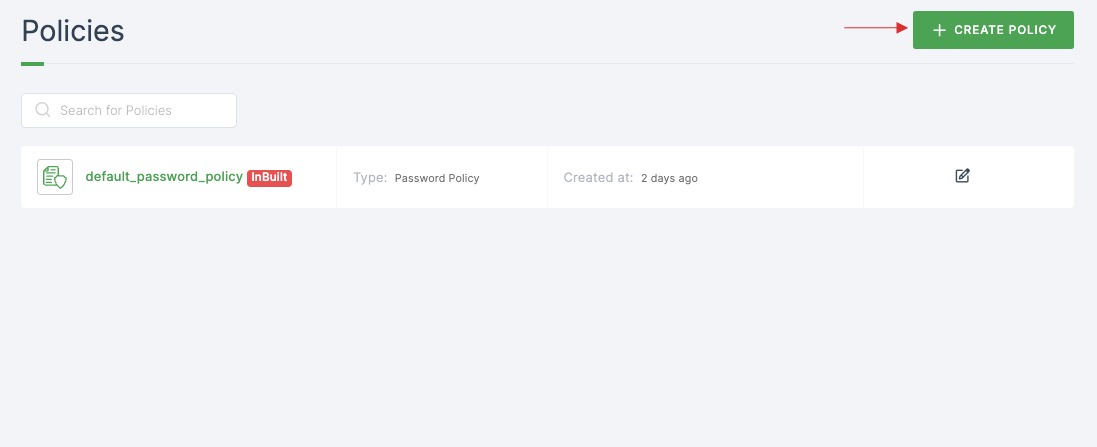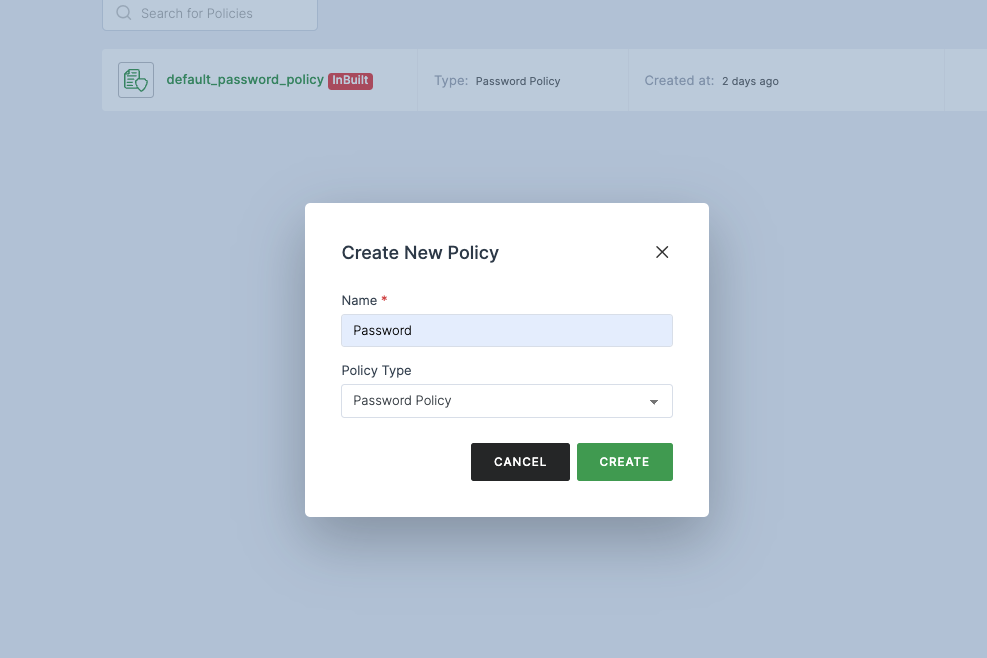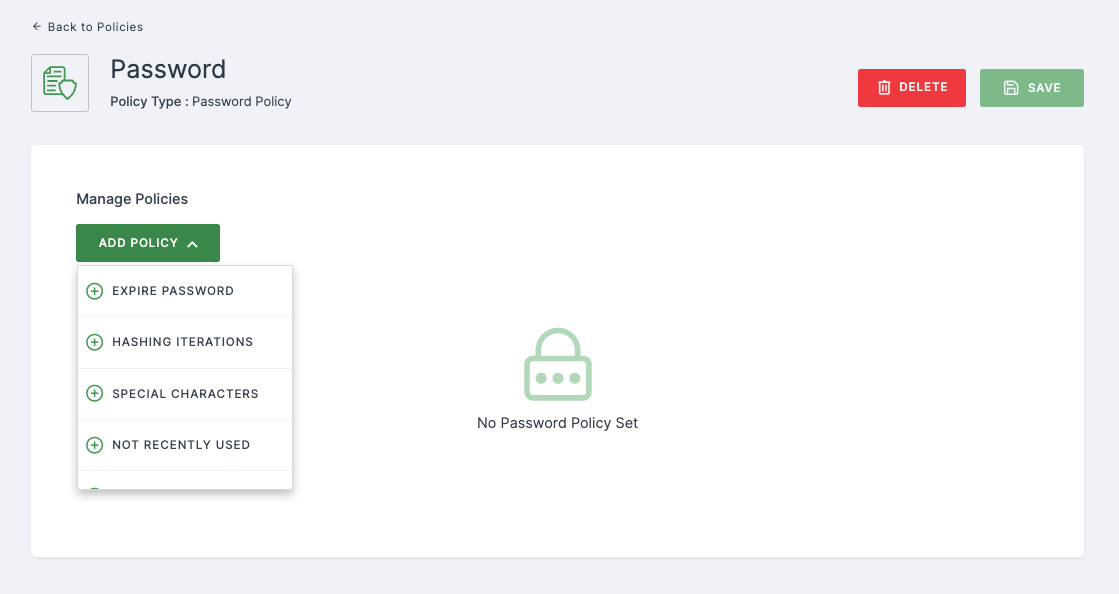Password Policy
In particular, it defines the permissions for actions regardless of the method used to carry out the action.
Follow the below steps
1 Go to Dashboard > Policies.
2 Click on + CREATE POLICY

3 Provide a descriptive name an select the policy type as Password from the dropdown.

4 Click on CREATE.
5 You will be moved to the created policy, and will be provided with options to manage and add policy types.
6 Click on ADD POLICY, the available list of policies will be displayed in the drop-down.
note
These set of policy types are specific to Password Policy.

Policies and its functionality
| Policies | Description |
|---|---|
| EXPIRE PASSWORD | Checks the number of days after which a user's password expires and must be changed. |
| HASHING ITERATIONS | Specifies the number of iterations used to increase the computational workload and duration of password hashing. |
| SPECIAL CHARACTERS | The minimum configured count of special characters (e.g., $, %, &,* ) within a password string. |
| NOT RECENTLY USED | Customizes the number of previously used passwords that are saved, preventing the reuse of any of these stored passwords upon change. |
| UPPERCASE CHARACTERS | Sets the minimum count of uppercase letters that must be included in a password. |
| LOWERCASE CHARACTERS | Specifies the minimum number of lowercase letters required in a password. |
| MINIMUM LENGTH | Establishes rules for a minimum character limit in the password. |
| REGULAR EXPRESSION | Requires the password to match one or more regular expression patterns. |
| DIGITS | Specifies the minimum number of digits required in the password string. |
| NOT USERNAME | Prohibits using the password that is the same as the username. |
| HASHING ALGORITHM | Determines the function used to map data of arbitrary size to a fixed-size, affecting password hashing. |
| NOT EMAIL | Prevents the password from being the same as the user's email address when this option is enabled. |
7 After configuring, click on the SAVE.